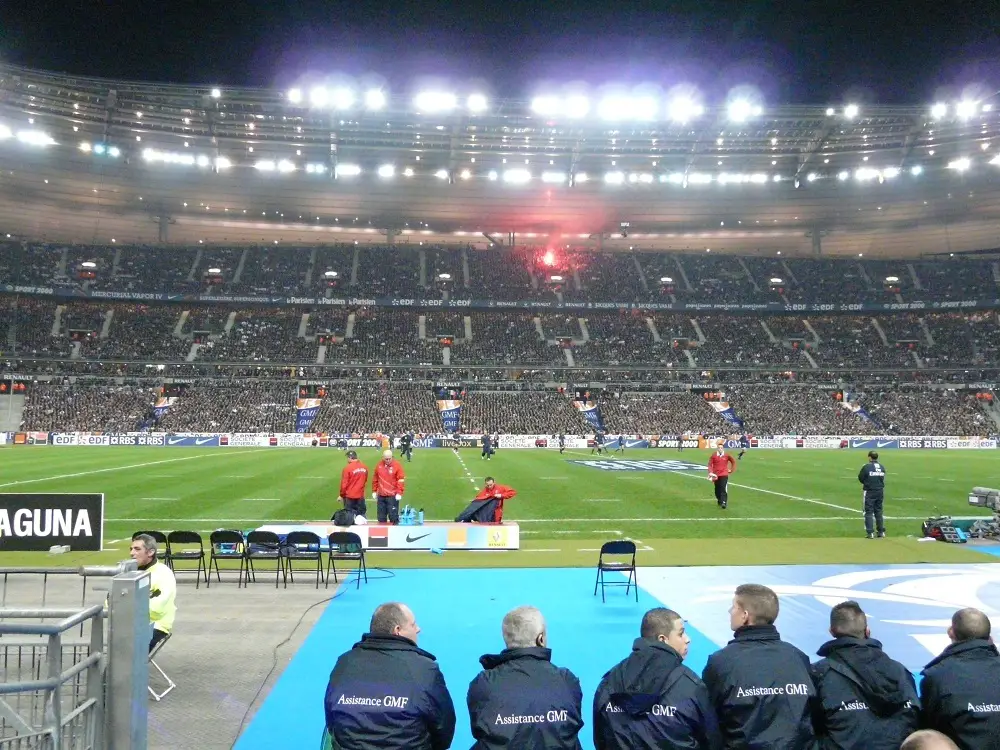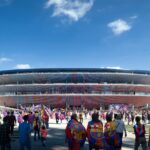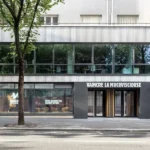Stade de France Building, Euro 2016 Arena Paris, Saint-Denis Architecture, Project, Image
Stade de France Building in Paris
Euro 2016 Venue: Arena in Saint-Denis, Paris, France – design by Macary, Zublena, Regembal, Constantini
10 Jun 2016
Stade de France Building in Paris
Design: CR SCAU Architecture – Michel Macary, Aymeric Zublena, Michel Regembal, Claude Constantini
Stade de France Building in Paris
Capacity: 81,338
Date built: 1995-98
Size Status: fifth-largest stadium in Europe.
Address: 93216 Saint-Denis, France
Architects: Michel Macary, Aymeric Zublena, Michel Regembal, Claude Constantini
Construction cost €290 million
This arena will host some matches at UEFA Euro 2016, including the final.
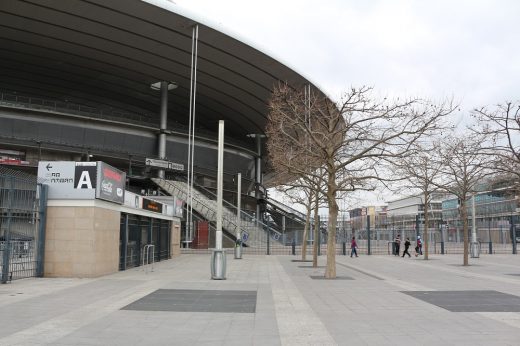
photo by SK Sturm Fan – Own work, CC BY-SA 3.0, http://commons.wikimedia.org/w/index.php?curid=46542247
The Stade de France is the national stadium of France, situated just north of Paris in the commune of Saint-Denis. Its seating capacity of 81,338 makes it the fifth-largest stadium in Europe. The stadium is used by both the France national football team and French rugby union team for international competition.
Originally built for the 1998 FIFA World Cup, the stadium’s name was recommended by Michel Platini, head of the organising committee. On 12 July 1998, France defeated Brazil 3–0 in the 1998 FIFA World Cup Final contested at the stadium.
Stade de France is listed as a Category 4 stadium by UEFA and has hosted matches for the 1998 FIFA World Cup, the UEFA Champions League finals in 2000 and2006, some matches for the 1999 Rugby World Cup, and the 2007 Rugby World Cup, making it the only stadium in the world to have hosted both a Football World Cup final and a Rugby World Cup final.
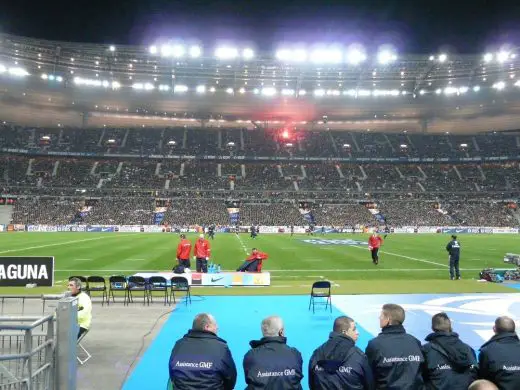
photo by bigup21, CC BY 3.0, http://commons.wikimedia.org/w/index.php?curid=47811241
Domestically, the Stade de France serves as a secondary home facility of Parisian rugby clubs Stade Français and Racing Métro 92, hosting a few of their regular-season fixtures. The stadium also hosts the main French domestic cup finals, which include the Coupe de France (both football and rugby), Coupe de la Ligue,Challenge de France, and the Coupe Gambardella, as well as the Top 14 rugby union championship match.
The stadium is also used for music concerts and other sporting events.
source: Wikipedia
Stade de France’s Euro 2016 Games
Group A – France v Romania, 10 June (20:00 BST)
Group E – Rep. of Ireland v Sweden 13 June (17:00 BST)
Group C – Germany v Poland, 16 June (20:00 BST)
Group F – Iceland v Austria, 22 June (17:00 BST)
Last 16 (1st Grp E v 2nd Grp D), 27 June (17:00 BST)
Quarter-final #4, 3 July (20:00 BST)
Final, 10 July (20:00 BST)
Stade de France Building
During the 1998 World Cup the Stade de France hosted nine matches, among which the opening match between Brazil and Scotland, the semi-final between France and Croatia, and the final between France and Brazil, in which the host team won.
The stadium has also hosted two Champions League finals, the first in 2000 between Real Madrid and Valencia, and the second in 2006 between Barcelona and Arsenal.
Website: Stade de France Paris
The national stadium in France resulted from the country’s selection to host the 1998 FIFA World Cup in July 1992. As a result of the selection, the country and the France Football Federation made a commitment to construct an 80,000+ capacity all-seater stadium with every seat in the facility being covered. It was the first time in over 70 years since the construction of the Stade Olympique Yves-du-Manoir that a stadium in France was being constructed for a specific event.
The Council sought for the stadium to be built as close as possible to the capital of France, Paris, and that the constructor and operator of the facility would receive significant financial contribution for a period of 30 months following the completion of the stadium.
The stadium’s design was handled by the team of architects composed of Michel Macary, Aymeric Zublena, Regembal Michel, and Claude Costantini who were associated with CR SCAU Architecture.
The installation of the roof and the mobile platform took more than a year to complete.
The Stade de France has a movable stand which can be retracted to uncover part of the athletics track. The stadium was notably designed with the assistance of a software simulation of crowd in order to get an accurate observation of how it would look fully developed.
The stadium was built without any undersoil heating. When Ireland were due to play France in the Six Nations Tournament rugby union match of 2012, the game had to be cancelled.
Roof
Construction of the Stade de France’s roof cost over €45 million. Its elliptical shape symbolizes the ‘universality of sport’ in France. Its area of six hectares and weight, 13,000 tons, is considered a technical marvel.
It was designed to easily protect the 80,000 spectators without covering the playing field. All lighting and sound, which include 550 lights and 36 blocks of 5 speakers, are housed inside to avoid obstructing visibility. The tinted glass in the center reduces the contrast and distributes natural light. It filters out red and infrared radiation, however, it allows blue and green lights, due to their necessity involving the health of the turf.
Stands
The Stade de France is the biggest modular stadium in the world with three galleries.
The forum is a low mobile platform of 25,000 seats. It is reached by the level 1. It can drop 15 feet to reveal all of the running track and jumping pits. It then retains 22,000 seats. The movement lasts 80 hours with around 40 people involved.
Access to the gallery is through with 22 bridges and can be found at level 3 with a concentration of restaurants, entertainment areas, shops and central station security.
18 staircases lead viewers to the upper gallery located at Level 6.
Location: Stade de France, Paris, France
New Paris Architecture
Contemporary Paris Architecture
Paris Building Designs – chronological list
Paris Architecture Tours by e-architect
Architect: Marc Mimram Architecture & Associés
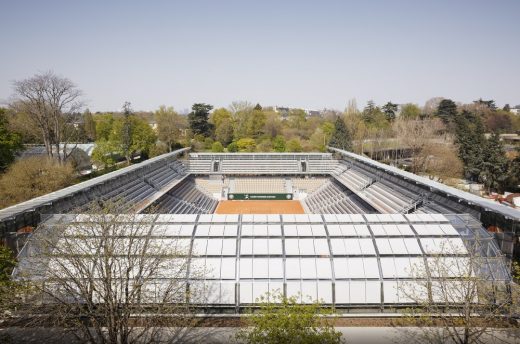
photograph © Camille Gharbi
Simonne-mathieu Tennis Court Building
Comments / photos for the Stade de France Building in Paris page welcome
Website: Stade de France Paris Arena

